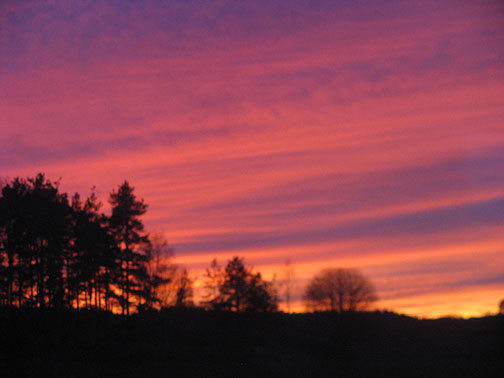
On the train from Oslo to Stockholm, we finally had clear skies. Towards the "end of the day" which is about 3:20 in this photo, we got this amazing sunset, which turns out to be somewhat typical of these days in Stockholm too. After seeing the Edward Munch museum in Oslo, and his famous painting The Scream, Adriana immediately tagged this view as the source of his inspiration...
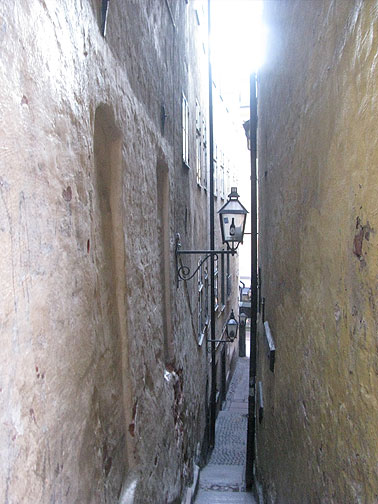
A pedestrian alley in the Old City.
Visiting my cousin and his boyfriend in Stockholm, we’ve had a few days to be tourists and wander around. It’s the perfect city for wandering, that’s for sure! I kept thinking of Italo Calvino’s “Invisible Cities” as we climbed staircases and stumbled upon elegant old churches and explored the Old City (Gamla Stan)… I also got a head cold, probably from the endless passage between too cold (outdoors) and too hot (indoors)… I forget what real winter is like!
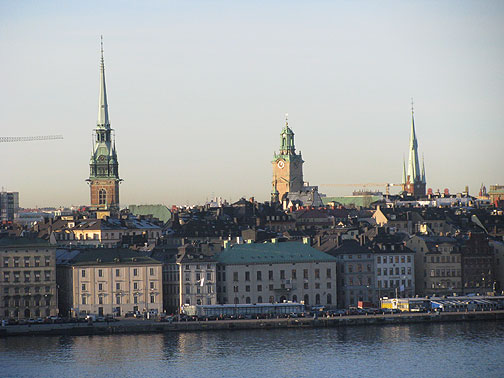
View towards the Old City from Sodermalm.
We stumbled upon the Sofia Kirke (Church), which was an impressive Lutheran edifice sitting atop a steep hill in eastern Sodermalm (a central island in Stockholm, rather trendy now after being a working-class district for most of its history).
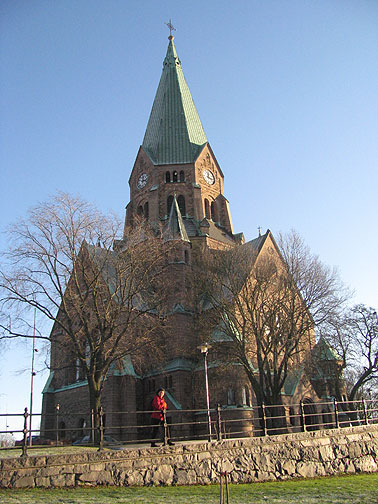
This Church won an architectural contest in 1899 and opened in 1906.
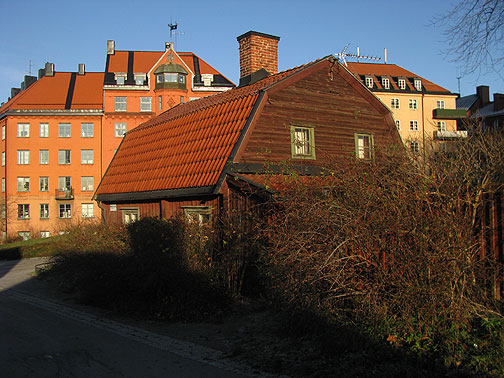
These are the charming workers houses that are now considered super desirable on Vita Bergen...
It is surrounded by charming small wooden houses with garden plots, and of course I was excited to discover this Nowtopian element in the heart of the city. Frommer’s City Guide to Stockholm told us: “[The church] is surrounded by just a few old wooden houses painted in the traditional red and once owned by the working classes, today they are highly desirable, particularly as they are near the necessary accessory of the young professional, an allotment.” So! Now the community garden is the “necessary accessory” of the young professional?!? Guess I’ll have to rewrite my book!
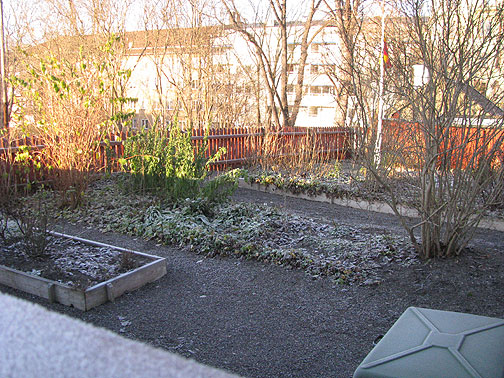
The gardens are pretty frozen now anyway!
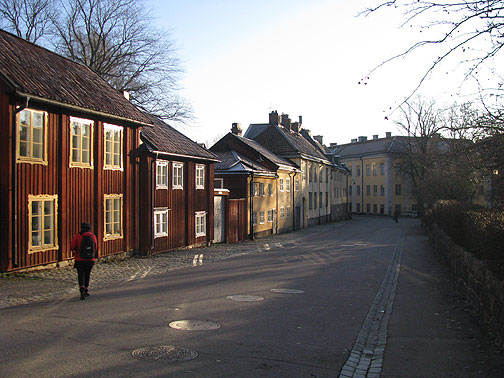
Not far from the Sofia Kirke we found this lovely street alongside a park where a bunch of folks were sun worshipping... We heard Stockholm had a total of 14 hours of sunshine in November, so people here are starved for sun!
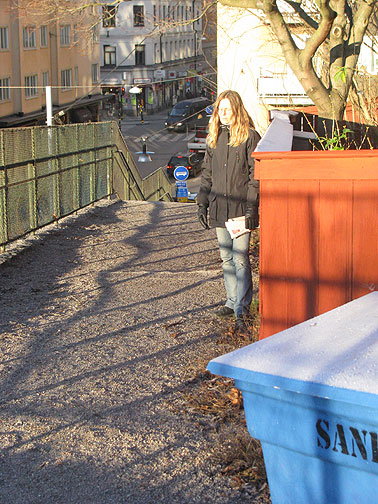
As you can see with this Stockholmer, sunworshipping here takes the form of facing the sun with your eyes closed and remaining still while soaking in the weak rays coming from the distant winter orb.
The new Turbulence is out and has a bunch of fantastic articles. Here’s a quote from the opening editorial that I thought important:
Allowing a new common ground to emerge involves a moment of grace, a stepping back from the assumptions, tactics and strategies of the anti-neoliberal, counter-globalist protest cycle of the turn of the century. The common ground constructed and maintained from that period must be recomposed through the prism of our contemporary situation.
The counter-globalisation movement was suspicious of ““ often even opposed to ““ institutions per se, constituted forms of power. This suspicion was obvious, for example, in the tension within one of its most institutionalised forms, the World Social Forum (WSF). The reason for the counter-globalisation movement’s scepticism was, of course, well founded: the result of the generalised recognition that neoliberal ideology had successfully colonised most social democratic parties and trade unions.
But when the crisis of neoliberalism irrupted, it became apparent that this mistrust of institutions had translated into an inability to consistently shape politics and the economy. Antagonism against institutions as an end in itself is a dead end. The power to vacate institutions leaves a void that politics, which abhors vacuum, tends to cover up with the calculations of piecemeal cooptation. Moments of antagonism are either part of ongoing processes of building autonomy and constituting new forms of power, or they risk dissipation, or even worse, backlashes. Today, it is necessary to have more than the sporadic show of strength: we need forms of organisation that start from the collective management of needs, that politicise the structures and mechanisms of social reproduction, and build force from there. What form could these take in the present climate? Campaigns against foreclosures, around the cost of utility bills, private debt, energy resources”¦? In any case, what is needed are interventions that start from shared life and acquire their consistency there; that employ moments of antagonism in order to increase their constituent power, rather than as ends in themselves.
If a decade ago, with the neoliberal doctrine at the height of its power and most institutional roads well and truly blocked, outright rejection was a credible tactic, the brittle ground of today presents us with very different problems.
This essay offers a lot more to chew on than this meaty piece, but I appreciated this one especially because it overlaps with a concern I’ve been writing about for the past few years: the cul-de-sacs of radical politics (pdf). It’s an ongoing contradiction that we’ve been up against for quite a while: how do we maintain and expand our presence without succumbing to institutionalization? Or put another way, how do we mount oppositional political activities without having to reinvent the wheel (and rent a new office, get new phone lines, etc.) every time? Our inability to avoid the suffocating realities of small business life (whether for-, non-, or not-for-profit) has led many of us to refuse to create any lasting institutions. Discomfort with the authority that tends to accompany seniority or longevity is another problem. We don’t want to fetishize expertise or experience, but then again, do we really want to naively pretend that everyone is equally capable of all activities, organizational as well as technical? Probably not.
So for all us who lean towards the anti-authoritarian end of the spectrum, we have to go beyond our usual cliches and easy answers. We can’t rely on the endless assertion that things will spontaneously work themselves out when they need to. That might happen, but it’s just as likely that they won’t, not without some meaningful institutional SPACE that we spend real time and effort to create now, well before the moment when we’ll really need it. Heading to Copenhagen in a couple of days, I’m intrigued to see how the various “movement” actors play their roles in the next 10 days. A great deal of preparation has gone into the protests and demonstrations, and there’s also a whole legacy of summit-hopping protest that this moment is a logical consequence of. I’m especially glad to have this unfolding in a modern, relatively affluent and comfy city, a place where we might be able to engage more deeply and intelligently with the complicated questions of a redesigned, complex, highly technologized urban life. So far, I’ve not encountered any primitivists who glibly insist that civilization is falling, or should fall, and in any case, there’s not much to do but to help it along… Here in social democratic Scandinavia, the sense of a safety net is still palpable, and the harsh climate and long nights also reinforce a strong sense of social interdependence. A potential breakdown in electricity or running water or communications is not welcomed as a harbinger of a new way of life, in the way that a lot of North American anarchists have tended to do in the past few years.
Anyway, more on this in the coming posts… I have a brief essay online at Shareable.net pointing to a possible grassroots approach to addressing the climate crisis. And I’ll be posting a piece on Monday at sf.streetsblog.org on a fascinating political intervention into transit politics here in Sweden called Planka.nu. My writings from Copenhagen will appear in all three locations, shareable.net, sf.streetsblog.org, and here. Hope you’ll check ’em out, and chime in via the comments! Love to hear from my readers…
Meanwhile, here’s some more images I wanted to share:
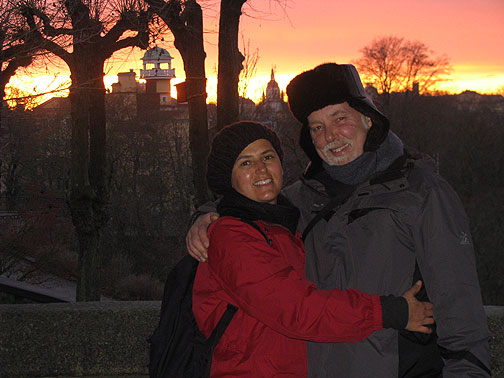
Sunset in Stockholm, around 3:30 pm.

Setting sun on tower in Skansen, an open-air museum of historic Swedish buildings.
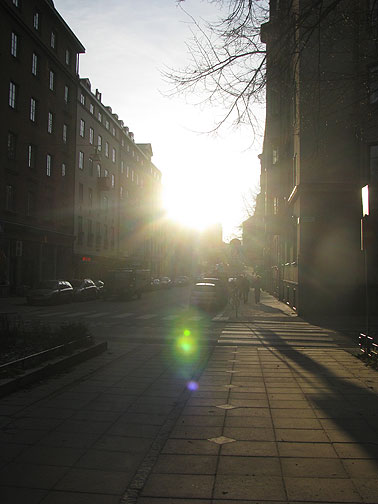
This is the sun at 1 pm on a Stockholm Street... and when it shines like this, locals tend to stop what they're doing and soak it up!

In Skansen museum, these are allotment huts, aka community gardens with small shacks, one from WWI era and the other from the 1940s.
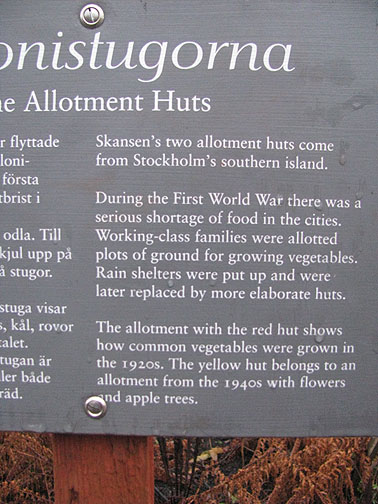
Explanation of allotment huts at museum.

It's been hovering around zero centrigrade and frost has stayed on the ground all day... until today, when everything was wet and it felt almost warm... about forty+ degrees fahrenheit I think.

The Vasa Museum is a great experience, and the Vasa is a fantastic modern lesson! A massive warship built by the Swedish crown in 1628, it sailed few thousand meters on its maiden voyage and was blown over in a squall and sank. The most feared warship of its time was a lemon! It laid buried for 333 years until it was found and brought up in a 4 year effort in the early 1960s, a real archeological tour-de-force. Now it's on display in a dedicated museum and it's absolutely stunning. Frighteningly huge, the nuclear-powered aircraft carrier of its day.
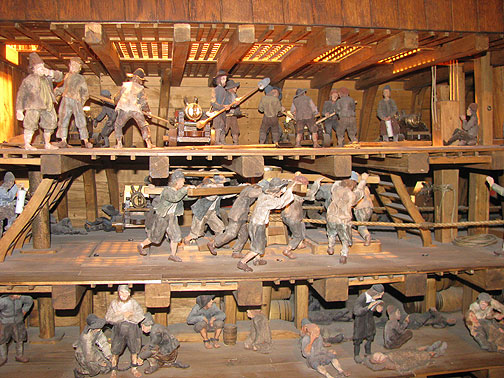
This is a model of the below-deck crews at work in the Vasa...
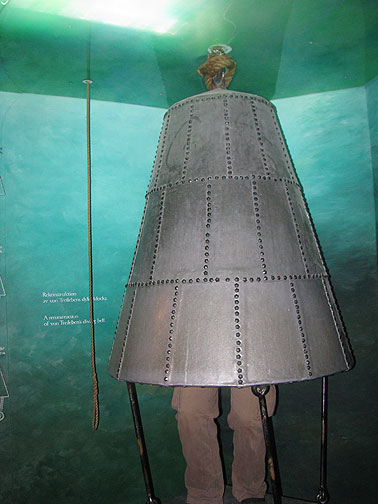
An actual diving bell from the 1700s, in which the diver stands inside the bell, breathing the air at the top, while submerged in 16 meters of freezing cold water. From the invisible top of the inside, he hooked the 1.5 ton cannon in the sunken Vasa, and one at a time they recovered more than 50 of them using this unbelievable technology!












Leave a Reply